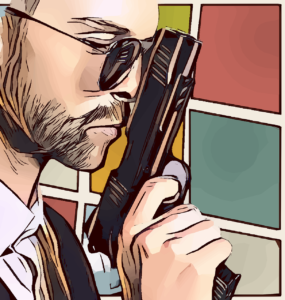
Playgrounds provide children with a healthy and fun way to exercise. However, children can get hurt on equipment that is unsafe or is not maintained properly. Each year, over 200,000 kids visit the emergency room due to playground-related injuries. A simple checklist can help to keep kids safe at the playground.
Surface
Kids are bound to fall as they get absorbed in their play, and the type of surface on which they land can impact their injuries. The right surfacing reduces the risk of head trauma by dampening the shock of the fall. Various materials are available, but the safest and most cost-effective is poured-in-place safety surfacing. This durable material comes in a variety of colors, shapes and thicknesses to match any playground design theme or ADA accessibility needs.
Other unitary surfaces like rubber tiles offer good shock absorption and ADA compliance, but they require more upkeep. Loose-fill safety surfacing materials like wood mulch, engineered wood fiber (EWF) and playground sand also have the lowest initial costs but must be regularly maintained at the required depth to stay within ADA and safety guidelines.
Equipment
Many playground accidents are caused by falling on or off equipment. Using a springy surfacing material that can absorb impact reduces the likelihood of broken bones. This surfacing is often made of recycled tires that have been processed to remove the steel and threads. Inspect 안전놀이터 equipment regularly for loose parts, sharp edges or protrusions that could puncture or cut children. Replace these parts immediately. Keep areas for preschool age children separate from those for school-age kids. Equipment with moving parts, such as see-saws and merry-go-rounds should be inspected to prevent children from being strangled or choked.
Make sure an adequate depth of protective surfacing extends around all playground equipment. This surfacing may be a loose-fill material, wood fiber rubber mulch, factory-made resilient tiles or a unitary safety surface. A good maintenance plan includes marking ideal surfacing depths on equipment posts to help determine when the material needs to be raked, redistributed or replaced. This is especially important for equipment with moving parts, such as swings and merry-go-rounds.
Tripping Hazards
A fall to hard surfaces causes more than 70 percent of playground injuries. The surfacing must be soft, padded and absorbent to minimize injury. It must also be properly installed and maintained. Abrupt changes in surface elevations, exposed concrete footings, crowded equipment and objects strewn throughout the play area are trip hazards.
Protruding components, entanglement hazards and head/neck entrapment are also serious dangers. The entrapment problem is exacerbated by clothing, necklaces and drawstrings that can get tangled in equipment or strangle children. To avoid these problems, ensure that there are no openings larger than 3.5 inches and 9 inches on any equipment. A lack of safe and age appropriate equipment discourages kids from being physically active. This can lead to long term health issues including obesity and depression. Adult supervision is a critical element to preventing accidents. Supervisors should observe kids playing, intercede if necessary and be available to react quickly in case of an injury.
Adult Supervision
Playgrounds are great places for kids to learn, socialize and exercise. Although most playground injuries are minor – splinters, scrapes and a few tears – some can be serious. Most injuries occur when children fall from equipment. Supervision is essential. Injuries are also possible when children get caught or cut on equipment that isn’t designed for their age or size and when metal equipment becomes too hot to touch.
Kids need to have adult supervision while on playgrounds because they can’t always gauge distances properly or foresee dangerous situations by themselves. Adults can also teach kids proper playground etiquette and safety rules, such as feet first on the slide, no pushing or shoving and waiting for others to take turns on equipment. Supervision can be difficult to maintain on playgrounds because of a variety of factors, such as the layout and equipment or the amount of children in a given area. Identifying blind spots in supervision zones and using a buddy system to watch more than one child at a time can help.
More Words
A safe playground has impact-absorbing surfaces such as wood chips, sand, mulch or rubber. Avoid surfaces like grass, asphalt and concrete that can cause injuries. Encourage children to play together safely and respect each other. Pushing or roughhousing is dangerous for everyone.





